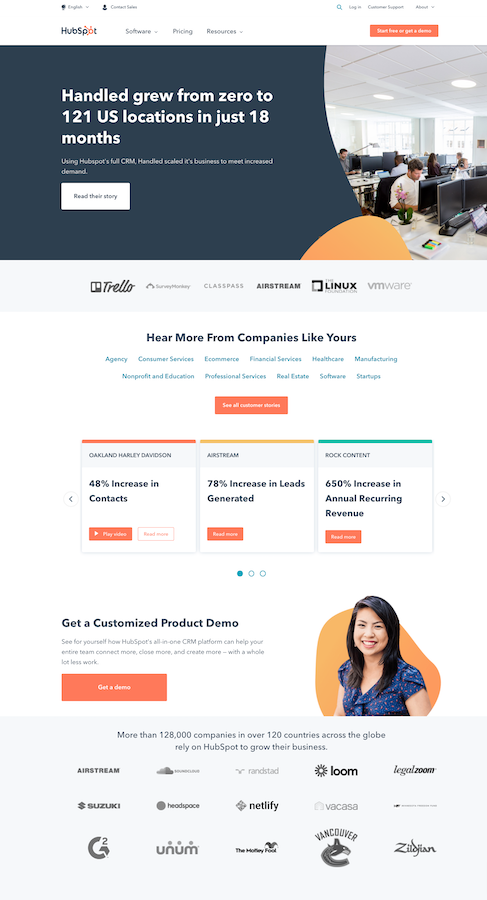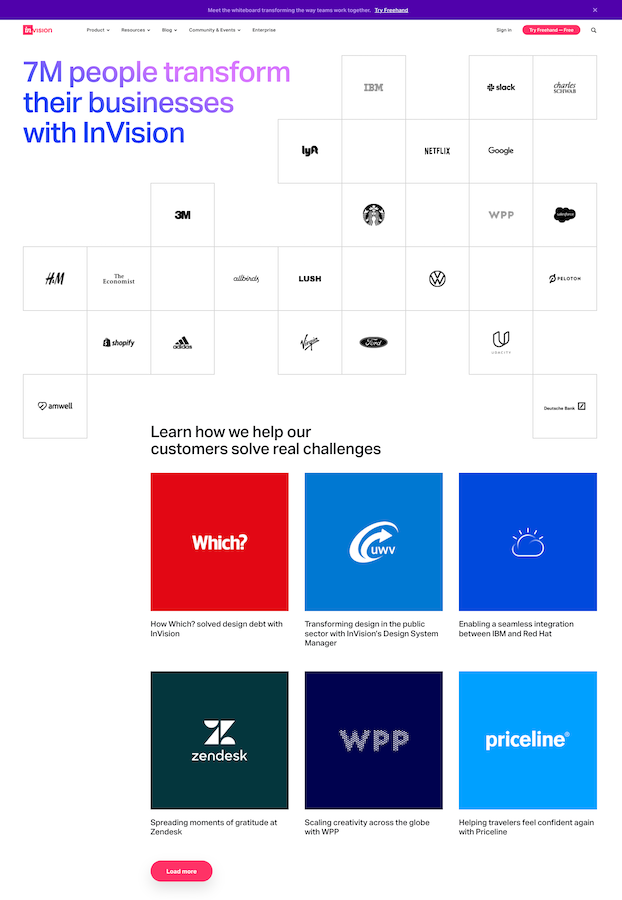15 Important Post-Launch Case Study Tasks For B2B Companies
Case studies are expensive. Investing in case studies will make your sales team happy, but you have to be able to justify the expense of doing these in-house (or hiring an outside business to help.) Today, I wanted to break down fifteen ways to utilize case studies post-launch so that you can justify case study marketing expenses.
1) Push Your Case Studies To Potential Customers Using Social Media Advertisements
One quick way to utilize your new case studies is to reach out to potential customers using social media advertisements. Here are a few ways you can do this:
Install a Facebook Pixel and retarget people who have viewed certain pages with relevant case studies.
Target people with interests or demographics you want to reach.
Use your pixel to create a lookalike audience and target those people with your case studies.
When using social media advertising to push your case studies, you need to keep a careful eye on reporting. Which ad is working? Which isn’t? Using UTM codes can be especially helpful for marketers experimenting with social media ads. You can use UTMs to track the performance of your advertisements, from clicks on social media to product purchases. UTMs are a bit more complicated, but they can prove helpful when proving the worth of case studies.
2) Add Case Studies To Relevant Drip Campaigns To Re-Engage Prospects
Drip campaigns can be a fantastic way to keep your brand top of mind for prospects. One thing you can do to improve your drip campaigns is to add relevant customer stories throughout the experience. According to data from BigCommerce, “72% of consumers say positive reviews and testimonials make them trust a business more.” When you want potential customers to see themselves working with your organization, add relevant stories to your drip campaigns.
In general, the more targeted your drip campaigns, the better they are. For example, if you have a drip campaign based on demo requests, try tailoring those drip campaigns by the information in your demo request form. For example, do you ask about the size of their business for appropriate lead routing? Try creating a campaign for small businesses and one for larger enterprises. You can then add specific case studies that might apply to those customers to those drip campaigns.
3) Use Case Studies In Your Email Signature
When was the last time you looked at your company’s email signature? For many businesses, email signatures are untapped real estate. If you have customer-centered roles like sales or customer service workers, you need to use your email signatures. Creating a more branded email signature experience will make every email your team sends a selling opportunity.
One of the most common email signature generators for individuals and organizations is Wisestamp. Wisestamp has built a beautiful tool that lets you create impressive and unique signatures, and companies can even create more personalized signatures if you need them.
4) Build Industry Landing Pages And Add Case Studies On Those Pages
Marketing personalization is essential in today’s world. Potential customers want to see what your product solves the issues they have. Industry pages allow you to speak to your potential customers' exact problems. When you back that up with customer reviews and case studies, you can make a strong case for going with your company over a competitor.
When building out industry landing pages, think about what companies you want to attract. Do you have a concentrated amount of customers in a particular industry? Start with those pages first. Inside those pages include reviews from sites like G2 and add links to in-depth case studies for those landing pages.
5) Share Case Studies With New And Potential Employees
Getting up to speed with a new organization can be challenging. One way to get your employees up to speed with some of your customers and the results they get from your company is by providing case studies. Reading case studies in your company’s archive should be required reading, especially for customer-facing roles like sales and customer success.
6) Link To Your New Case Studies In Relevant Blog Posts
If you are looking for a quick way to get blog viewers further up the funnel, link to relevant case studies in your blog content. Case studies are a great middle to bottom of funnel content you can easily link to within the articles you are producing. Are you talking about a particular product or writing for a specific industry? Make sure you connect the dots by showing how your customers use your product.
7) Create Images For Each Case Study To Post On Social Media
Posting links to your best case studies on social media can be an excellent way to increase their reach. If you want to mix it up, you can even create images like the one I share below. I quickly whipped this up in Canva, and it’s such a simple concept. When you post on social media, your goal is to get potential customers intrigued by the results your customers get. Using statistics can drive home the value of your product.
See How This {Company} {Used Your Product} To {Get This Fantastic Result.}
See how this tax servicer used our finance product to slash appointment times by 50%.
See how this school used our scheduling software to fill 250 empty classrooms in one year.
See how this business used our billing software to manage $1,000,000 in invoices.
Pro Tip: Do you want to further extend the reach of your case study? Tag case study participants on social media, so they share it with their audience.
8) Highlight Customer Stories In eBooks And Webinars
Are you looking for something quick to add to your other marketing assets like eBooks and webinars? One quick way to take your content up a notch is to feature your customer stories.
When you get to the part of your asset where you need to sell your services, pick a relevant story that resonates with the person consuming the asset. Part of the reason companies love case studies is because people trust their peers. Highlight the stories of customers using your products, and your potential customers will resonate with them.
Furthermore, you could even invite your customers to join you in sharing their stories during webinars and live events. Of course, it doesn’t always work out for your timeline, but inviting a customer to participate in a panel discussion about your product can be a great sales tool. When potential customers hear the words straight from your customer’s mouth, it can instill even more trust in your brand.
9) Create A Dedicated Case Study Page
Once you have enough case studies, consider creating a dedicated page for your case studies.
Creating a page showcasing some of your best customers can make a massive difference for prospects. It can be one of your best sales tools if you highlight it well. Case study pages aren’t just about case studies. They can be a wonderful way to show off your logo reel and highlight smaller reviews (reuse G2 and Capterra reviews.) Companies are also using this space to show the breadth of customers who use their product. FOMO is real.
Here is some dedicated case study page inspiration from five awesome companies to help you stylize your page.
Create A Case Study Flipbook
If your sales team is always asking for more assets, why not create a case study flipbook using your archive of case studies. Once you have a nice catalog of case studies to choose from, curate flipbooks highlighting your customer stories. If you have a bunch of case studies from one genre (retail, perhaps), you can even create a special retail case study flipbook. Then, as potential customers connect with your brand, send them a flipbook that resonates with their industry and company size. Personalized marketing at its finest!
10) Encourage Sales To Send Case Studies To Leads During The Sales Process
Customer case studies can make a huge difference for your sales team if they use them correctly. Encourage your sales team to send out case studies that resonate with their potential buyer. Sending a tailored case study with a personalized note can make all the difference in moving your prospect to the next stage of the sales process.
Whether your sales team is sending a cold email, re-engaging a lead, or helping a prospect understand the value of your product, case studies are an essential part of the sales process.
11) Turn Case Study Recordings Into Video Testimonials For Your Products/Services
One of the best parts about case studies is you can record the call and easily turn them into videos for your products/services. Even if you record videos virtually on Zoom, cutting videos into influential testimonial videos is simple. Utilize a service like Upwork to find a video editor who can turn your case study recordings into video testimonials to make the most of your time spent with a customer.
12) Ask Case Study Participants To Share Their Stories Online
Your customers have their own networks, and they probably have connections who could use your services. After you publish your case study, follow up with a quick ask to share the piece with their audience. If you want to further guarantee that the case study will be shared, send along some sample copy that they can paste on their network of choice. You can even send some of the images you created to promote their story on social media.
Here is an example of what that sample copy can look like:
“Working with {Company} has helped me become a better {Title.} Before {Company} I was struggling to {insert their main challenge.) Since implementing their {name of product}, I have seen {insert their main outcome(s).} I recommend them for anyone that needs {insert what your product does.} Click the link to learn more about the transformation I have seen since implementing {Company.}
13) Create Marketing Content Based On What Customers Shared During Their Interview
One of the best parts about connecting with customers and interviewing them is the myriad of content ideas you get when speaking to a customer. This is because you are asking a customer some very specific and vital questions:
What did they do before finding your product? Why didn’t that thing work?
How did they go about finding a solution? What criteria were they looking at?
How did your solution help them solve their problems? What made it stand out above the competition?
What results have they received since implementing your solution?
Would they recommend your solution to a colleague? What would they say to someone going through a similar problem?
Getting answers to all of these questions is bound to give you content ideas. Whether you are looking for fresh content for your blog or a new knowledge base article, each interview will help inform the kinds of content you should be putting out going forward.
14) Cold Pitch Potential Customers In A Related Industry Using Your Case Study
Once you have a case study, you should be working with sales to release that case study with cold pitches and marketing campaigns. For example, try finding a list of potential customers who fit the demographics of the case study participant. Once you have that list, send a cold email to those people from a sales rep with a link to the case study. Encourage your sales team to follow-up and keep moving prospects down the funnel after your initial marketing-focused reach out.
15) Refine Your Case Study Process To Improve The Workflow
After each case study is complete, your goal should be to refine the case study workflow. One of the most critical post-launch case study activities is doing a post-mortem on the work you did.
What went right? What went wrong?
Were there any parts of the case study process that seemed unnecessary?
Did I communicate the journey we’d be taking effectively? Did I uphold my end of the process?
Were my questions helpful in getting to the most important statistics and information?
What could I have done to make the case study participant more comfortable?
Did my sales and marketing teams find the case study helpful?
Dissect your case study and prepare to tackle another one with a better plan in place.
Conclusion: Extend The Life Of Your Case Studies
Case studies are helpful for sales/marketing alignment, but they can be expensive to tackle. The best companies know how to extend the life of their case studies by investing in strategies like the ones we discussed today. As you decide to invest in case studies for your brand, think about what happens post-launch. Case studies can be remixed and used to drive revenue for your business, but you’ve got to put your thinking hat on to make that a possibility.







